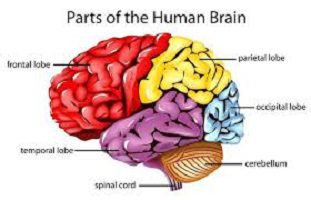What is psycholinguistics
Psycholinguistics. One of the characteristics that most differentiates human beings from other species is language, thanks to which human beings have been able to evolve considerably over the years. Therefore, the study of language, while complex, has acquired great relevance in recent decades.
Psycholinguistics is that branch of psychology that allows us to analyze the process of both the production and the understanding of human language, as well as its acquisition at an early age.
In this article we will explain what psycholinguistics consists of and we will also see the research areas that are within this branch that is linked to both psychology and linguistics.
What is psycholinguistics
The appearance of the term psycholinguistics took place in 1951 at Cornell University (United States), where a committee for the study of psychology and linguistics was created, which at that time was chaired by Charles Osgood, the famous American psychologist. known for developing the scale known as “semantic differential”, which allows measuring people’s attitudes towards an issue, based on the choice of one word or another, which are at the opposite pole.
Another pioneer in the field of psycholinguistics was Noam Chomsky , who explained that language must be understood as a systematic process made up of a series of principles and rules that fulfill their function at a cognitive level and are responsible for creating sentences in spoken form. This scholar of language stated that children are capable of learning the mother tongue because they are biologically prepared for it, this mechanism being universal for all humans; however, for this it is also necessary that they be stimulated by their parents and/or caregivers.
Thus, psycholinguistics is the branch of psychology that is responsible for studying the way in which human beings process spoken language , that is, the way in which they understand, produce, acquire or even lose the ability to speak.
At the same time, it studies the cognitive processes that come into play when processing spoken language, and it is that psycholinguistics is considered today as a consolidated science within the general framework of cognitive sciences, possessing a very multidisciplinary character, as We will explain in more detail later.
This branch of psychology is located in turn between psychology and linguistics, using theories from both areas of knowledge to originate new research in order to understand the underlying mechanisms of psycholinguistics.
Likewise, psycholinguistics focuses its attention on both psychological and neurological factors that influence spoken language , giving psycholinguistics consideration as an area of experimental study (eg, studying the process of language acquisition during childhood or also from the study of the learning process of a second language).
Objectives of Psycholinguistics
Among the objectives of psycholinguistics and the psychology of language to understand and explain the psychological and neurological processes involved in the process of expressing oneself through spoken language, the following should be highlighted :
- Understand the process that the brain performs to decipher the messages it receives through spoken language.
- Study the processes involved in the acquisition of a language.
- Understand the production process of the language spoken by people.
- Analyze the processes and structures of the brain that give the human being the ability to speak.
- Study the process of storing information in the brain.
- Analyze the functional organization of the ability to communicate through language.
- Carry out the study of the evolution of language during the stages of development in childhood.
- Analyze the thought of human beings.
- Analyze writing ability.
- Carry out a syntactic and semantic analysis of the language.
- Study the listening comprehension of the human being.
- Analyze verbal expression.
These are some of the objectives of psycholinguistics from which studies and research are carried out in various areas, among which are those that we will explain in the following section.
Research areas of Psycholinguistics
Below we will briefly explain what the main research areas of specialists who work in the field of psycholinguistics consist of.
1. Production of spoken language
This area of psycholinguistics is responsible for studying and understanding the underlying processes that allow human beings to produce language (for example, the way in which the information that someone intends to express through language is transformed into acoustic waves).
2. Comprehension of spoken language
In this area, the objective is to understand how an acoustic signal can be interpreted as a spoken language by the person or group of people who have received this message through their ears.
3. Language acquisition process
This area is responsible for studying and analyzing the way in which a child acquires a series of skills that allow him to acquire the ability to speak throughout different phases.
4. Disturbance or disorders that affect the production and/or comprehension of language
It is the area of psycholinguistics that is responsible for studying the different disturbances in the brain that can cause certain difficulties in expressing and/or understanding language (for example, Wernicke ‘s aphasia and Broca‘s aphasia ).
5. Study of thought and language
This area is responsible for studying the interrelationship between thought and language, which enables a person to, among other functions, think before speaking or mentally analyze certain phrases that they have heard . This also allows you to develop a series of arguments regarding a given topic or express your own ideas.
6. Neurocognition
It is the area of psycholinguistics that is responsible for studying and understanding the different areas of the brain that are involved in both the production and comprehension of language (for example, today we know that the Broca area is a section of the human brain that is involved in the production of language).
As we can see, psycholinguistics, through its different areas of research, is responsible for carrying out a fairly complete and exhaustive analysis of people’s language, which is why it proves to be a very important area within scientific research and, in particular, of psychology.
How does psycholinguistics differ from other branches?
Psycholinguistics differs from other branches in the way of approaching language. Let’s see how he does it:
- Study. Study how language is used. To do this, it focuses on the use of our knowledge and the psychological processes involved.
- Performance. It values the set of procedures by which knowledge is applied to the production and understanding of linguistic expressions .
- Acting processes It focuses on those who put the linguistic instinct into operation.
There are other branches that are dedicated to the study of language, but they do it from another perspective. For example, sociolinguistics does so by studying the relationship between sociocultural and linguistic phenomena. It also serves as an example of linguistics itself, which is dedicated to origin, evolution and language structure.
Perhaps, it tends to be more confused with linguistics and psycholinguistics. Xavier Frías Conde makes it easier for us to understand his contrasts in his article «Introduction to psycholinguistics». Suggests that they differ among other things in:
- Understanding. The minimum acoustic unit is the phoneme for linguistics. And, for psycholinguistics, it is the syllable.
- Production. The subject of study in linguistics is the ideal native speaker. On the other hand, for psycholinguistics it is the real speaker.
- Object of study Regarding the use of language, linguistics seeks the most elegant, formal and abstract forms of language. And, psycholinguistics the principles of operability.
At this point you will ask yourself, how does psycholinguistics study? It does so through interventions with two approaches:
- Observational Based on the linguistic behavior test. In addition, it is done through the collection of natural data in contextualized everyday situations.
- Experimental. Through the scientific method, in laboratory experiments .
In addition, psycholinguistics, like most disciplines that have been born from two others, is very careful in its methodology . Therefore, experiments in this field tend to stand out for their good design and execution. Also, as science it generates new questions through the answers it finds. Thus, we speak of a very lively field.
What are the psycholinguistic skills?
It is all those we have to communicate with. Therefore, essential when interacting. Let’s see:
- The language.
- The thought.
- Writing.
- Auditory comprehension.
- Sequential auditory memory.
- Visual comprehension
- Visual association .
- Verbal expression.
- Motor expression
- Visual integration
- Auditory integration
- Sequential visomotor memory.
However, to assess these skills, psycholinguistics relies on the research paradigm of cognitive psychology , which is based on mentalist, functionalist, computational and restrictive theory.
In sum, psycholinguistics is a current science. In addition, thanks to his constant passion for research, especially in the experimental field, it will help us decipher the complexity of language in human beings . Therefore, with his advances he tells us how we produce, codify and dispose of language as an instrument of communication.
Relationship with other areas of science
As we have seen, psycholinguistics is closely related to other areas such as psychology, linguistics and neuroscience. For this reason, we will briefly explain their relationship with some of them.
1. Psycholinguistics and Linguistics
Psycholinguistics and linguistics have always been closely related since their origins , both being located within the information processing paradigm; and it is that these two areas have supposed two approaches that complement each other.
Scholars of psycholinguistics have cognitive processes and mental representations as their object of study, while scholars of linguistics are responsible for studying and understanding how to characterize the grammatical rules of language and the propositional forms used in language. natural language.
With regard to understanding human language acquisition, pure linguists are concerned with developing hypotheses to understand the initial state that is compatible with the ability to learn language, while linguistic psychologists focus rather on the cognitive mechanisms that make this learning possible , and for this, it is essential that they understand both the structure of natural language, and, for example, the capacities of the human being to be able to process information in the mind.
It should be noted that there are various currents in the study of language, both within psycholinguistics and within linguistics, which use different approaches to do so.
2. Psycholinguistics and neurosciences
There is a close relationship between psycholinguistics and neurosciences, since one of the most important goals for psycholinguists is the study for knowledge and understanding of information processing in the human brain. And it is that the processes that allow us to understand and also produce language originate thanks to the functioning of the brain. Therefore, to perform a comprehensive analysis of language production and processing, it is necessary to understand the underlying brain mechanisms .
An example of this is that there are numerous studies that have revealed that there are some areas of the left hemisphere that are closely related to the processing of information transmitted through language (for example, Wernicke’s area is the main area of the brain in charge of the process of language comprehension, and Broca’s area is the one that is specialized in the production of language).

